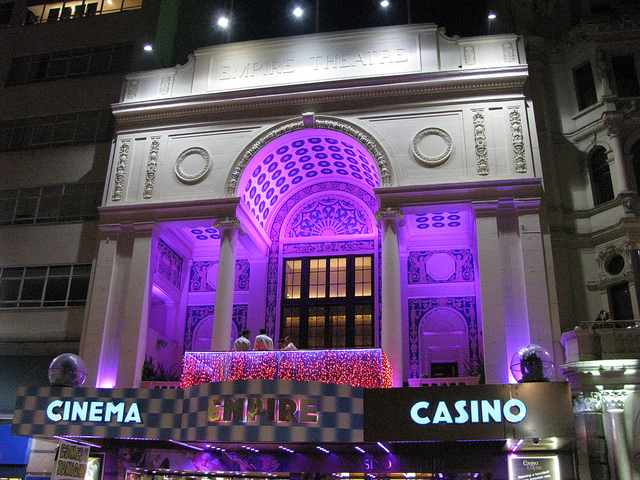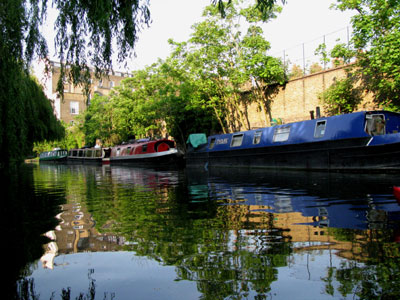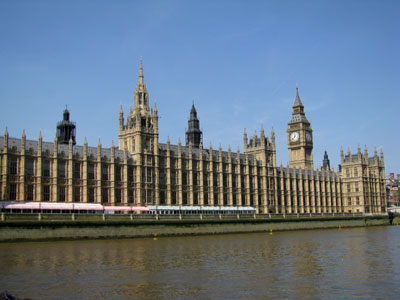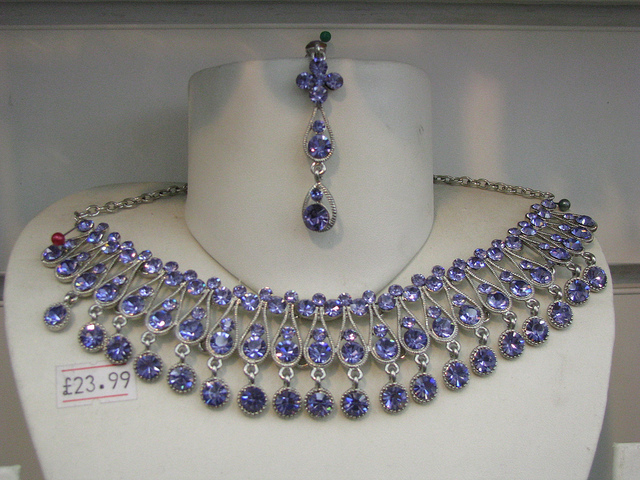In our explorations of the Financial District we came across another local landmark: Leadenhall Market, a historic market that dates back to the 14th century. On weekdays it sells fresh fruit, vegetables, meat, fish and cheeses. Various upscale retail stores are also housed in the market which features a visually stunning interior. Leadenhall Market incidentally was designed by the same architect, Sir Horace Jones, who designed Smithfield Market which we had already visited earlier today. The centre of the market is the confluence of four major corridors of stores, and its highlight is an ornate cast iron and glass roof structure that is painted in a distinctive combination of cream, maroon and green.

The historic Lamb Tavern inside the Leadenhall Market
A popular destination inside Leadenhall Market is the Lamb Tavern, since 1780 a gathering place for local city professionals, visitors and tourists alike. As today was Saturday the market was quiet, but it must be a hustling and bustling place during the week. Right next to Leadenhall Market is the Lloyds Building, head office of the world famous insurance company Lloyd’s of London. Designed by renowned architect Richard Rogers and built between 1978 and 1986, many of this building’s features are located on the outside, for example the elevators, power lines and water pipes. It shares these similarities with the Pompidou Centre in Paris, which was also co-designed by Rogers.

Lloyds Building
Just a few steps away is another true landmark of London: The Swiss Re Tower, much better known as “The Gherkin”. And what an apt description this is: this blue and silver-coloured 180 m high tower is indeed shaped like a graceful cucumber and is the second highest building in London. Its distinctive shape is instantly recognizable in any image of London’s skyline. Alluding to its phallic appearance, other nicknames for this building include the “Towering Innuendo”, the “Crystal Phallus” and even the “Glass Dildo”. The unusual rounded shape of the Swiss Re Building provides a tantalizing contrast to the surrounding angular modern and classic architecture of the Financial District.

The Gherkin
After our explorations of the City of London our next destination was Liverpool Street Railway Station since we needed to catch a train for our dinner appointment. Another one of London’s big railway stations, Liverpool Street Station is an important departure point for trains to the East of England. Commuter trains to East London and Essex also depart from here. Opened in 1874, this train station is another example of Victorian railway architecture.

Historic Liverpool Street Station
I am always fascinated by historic train stations, and Liverpool Street Station was no exception. The glass and wrought iron roof and the historic Victorian façades had me in awe. Since we had not had any lunch yet and it was already late afternoon, I grabbed a quick sandwich at one of the shops in the station, and when I was finished I was struck by the fact that there were no garbage cans anywhere in the train station. Andrea explained that since the 2005 London bombings, garbage cans have been removed as an anti-terrorism measure.

Sculpture commemorating the Kindertransport
Outside the train station there is a memorial sculpture to the Kindertransport, commemorating the arrival of thousands of Jewish refugee children in the late 1930s. The United Kingdom took in almost 10,000 children from Nazi Germany and its occupied territories, and many of them arrived right here, at Liverpool Street Station.

Inside Liverpool Street Station
Now it was already late afternoon, and we were headed further afield for a special dinner meeting. We were going to meet Andrea’s daughter Nina and a friend in a restaurant called Eat 17 in Walthamstow Village in North East London. This restaurant had become a favourite destination of Andrea and her daughter, and we were headed there to check it out. After a relaxing ride in the local train we arrived at close to 6 pm in Walthamstow, whose original name Wilcumestou translates as “The Place of Welcome”. This part of London was settled mainly during the late 19th century, after the arrival of the railways. We walked up a pleasant main street and sat down at a table on the comfortable patio of Eat 17.

Dinner awaits at Eat 17
The owner, Daniel O’Connor, a dynamic 20-something entrepreneur and a blonder, more handsome version of Hugh Grant, showed me around the restaurant and explained that Eat 17 is really quite a new business. After about four years of working as a head concierge for a major London hotel, Daniel decided he wanted to embark on his own entrepreneurial adventures and opened Eat 17 in July 2007. Originally its menu was focused primarily on waffles, but the cuisine has since branched out to include a wide variety of breakfast dishes, sandwiches, salads, lunch and dinner items. Of course, for us the waffles still held a big attraction.

Daniel (third from left) and his crew from Eat 17




